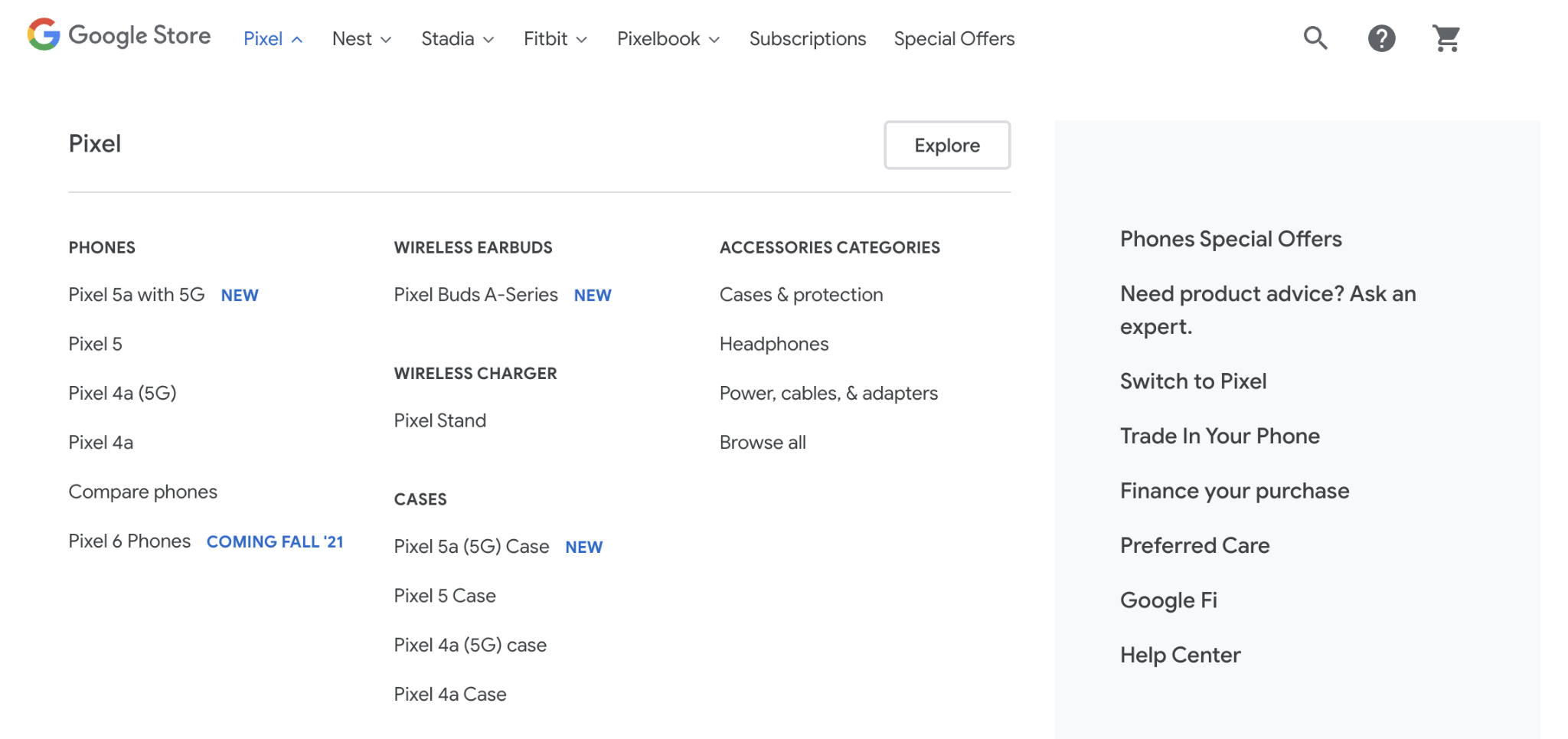e コマースサイトの構造を Google が把握できるようにする
Google は、サイト上の最適なコンテンツを探すために、リンクに基づいてページ間の関係を分析します。つまり、サイトのナビゲーション構造(メニューやクロスページ リンクなど)は、そのサイトの構造に関する Google の認識に影響を及ぼす可能性があります。
たとえば、ページに到達するまでに経由するリンクの数や、そのページを参照しているリンクの数などの情報は、そのページをサイトの他の部分と比較した相対的な重要度を Google が推測する材料になります。Google 検索でページの重要性がどのように判断されるかについては、Google 検索の仕組みをご覧ください。
e コマースサイトのナビゲーションを Google クローラに対応させる
Google がサイトのすべてのページを見つけられるように、e コマースサイトに関するベスト プラクティスに沿って、どのページにもサイトのナビゲーションからリンクをたどって到達できることを確認します。たとえば、メニューからカテゴリページへのリンク、カテゴリページからサブカテゴリ ページへのリンク、そしてサブカテゴリ ページからすべての商品ページへのリンクを追加します。また、構造化データを追加することをおすすめします。これにより Google は、サイト上のさまざまなページの目的を把握し、この構造を強化できます。

カテゴリの商品への直接リンクがカテゴリページにすべて含まれていない場合、Googlebot は、クロールだけですべての商品を見つけられない可能性があります。これらの商品に検索ボックスからはアクセスできても、カテゴリ閲覧ではアクセスできません。Googlebot は通常、サイトをクロールする際に検索内容を検索ボックスに送信することはありません。インデックス登録を希望するすべての商品にリンクすることを強くおすすめします。すべてのページにリンクできない場合は、サイトマップか Google Merchant Center フィードを使用してください。こうしたソースには、クローラでは見つけられないサイト上のページへのリンクを記載できます。
Googlebot がリンクを正しく見つけられるように、他のコンテンツへのリンクを作成する際は <a href> タグを使用します。ナビゲーション用に他の HTML DOM 要素で JavaScript イベントを使用しないでください。JavaScript とページ コンテンツのインデックス登録について詳しくは、JavaScript SEO の基本を理解するをご覧ください。
最適なカテゴリや商品を宣伝する
通常、Google が URL の構造からサイトの構造を把握することはありません。代わりにページ間のリンクを分析して、サイト上のさまざまなページの相対的な重要度を把握します。一般的に、サイトの他のページからリンクされていることが多いページほど、サイト上の相対的な重要度が高くなります。
たとえばベストセラー商品がある場合は、ホームページや他のコンテンツ(サイトのブログ記事やニュースレターなど)からもリンクすることを検討してください。これにより、サイトに対する商品の重要性を Google が把握できるようになります。
Google が目指すのは、ユーザーが探している情報を見つける手助けをすることです。ユーザーにとって価値のある、有益で興味深いコンテンツを作成することこそが、最終的には最善の SEO 対策になります。
詳細については、ファセット ナビゲーション URL のクロール管理をご覧ください。
